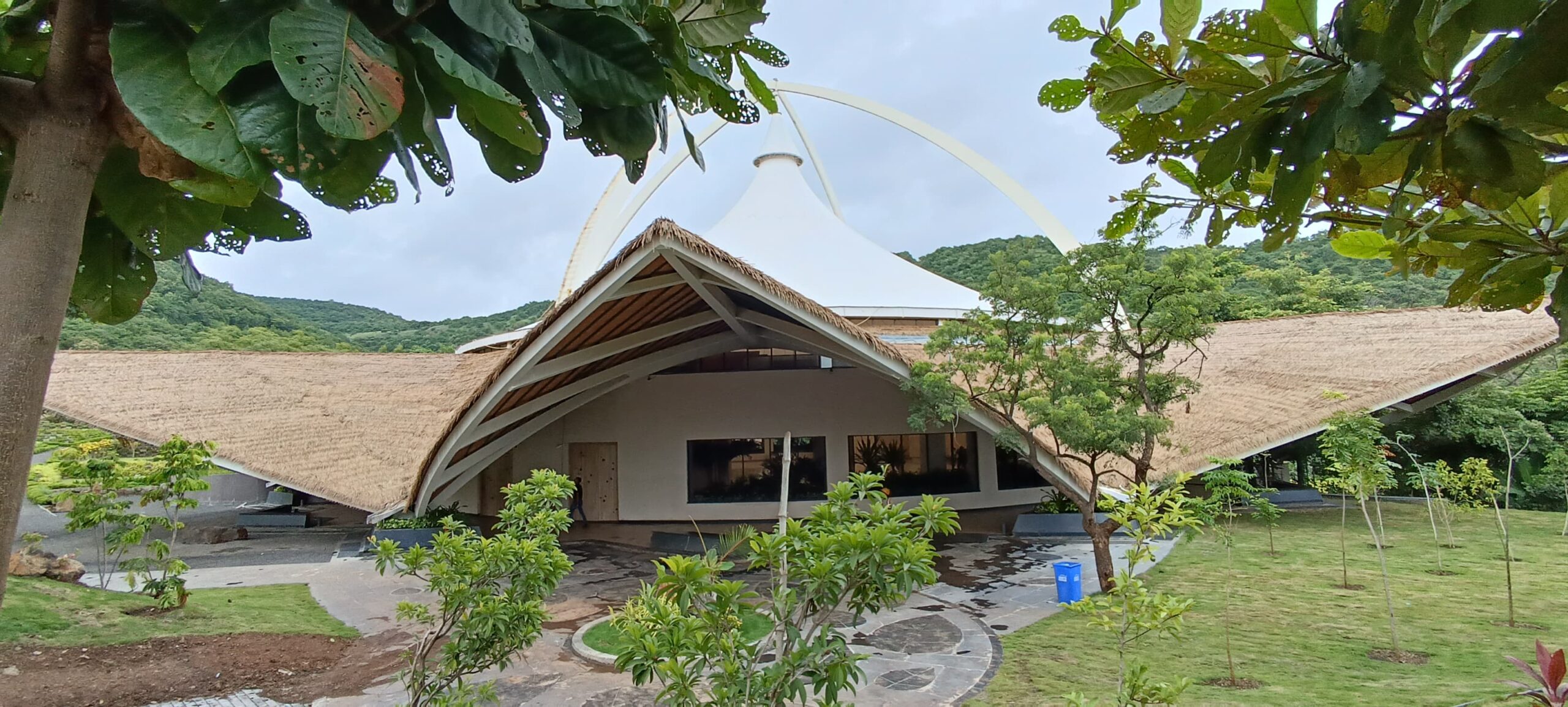Reed Thatch Roofs VS Synthetic Thatch Roofs: Which One is Right for You?
Posted by syntheticthatch No Comments on Reed Thatch Roofs VS Synthetic Thatch Roofs: Which One is Right for You? Synthetic thatch roofs
Reed Thatch Roofs VS Synthetic Thatch Roofs: Which One is Right for You?
Choosing the perfect material for your roof can be a bit of a tough decision. it is a choice between sticking with the traditional reed thatch roofs or going in for synthetic thatch roofs. In the last few years, artificial reed thatch roofs have become quite popular because of their distinct advantages and benefits.
As a homeowner who wishes to add a creative element to your outdoor space or a resort owner wanting to add a tropical vibe to your place, you need to have a thorough understanding of the key differences between traditional reed thatch and the synthetic variety. This will help you make the right choice.
What Are Reed Thatch Roofs?
Conventional reed thatch roofs are made from natural materials like grass, palm fronds, or water reed. These add a rustic charm to the place.
Advantages
- Natural reed is 100% biodegradable. Therefore, it is an eco-friendly roofing option.
- The natural texture of the material has a unique aesthetic appeal. There is a feeling of a tropical ambience.
- In many parts of India, especially in the coastal areas and in the South, natural reed roofs showcase a culture, a rich tradition that has been passed on from generation to generation.
- Reed roofs also speak about the craftsmanship of the local community.
- The other distinct advantage of the reed thatch is that it allows natural ventilation. That is why houses with natural reed thatch roofs have pleasant indoor ambience as the temperature is regulated by the roofing material.
Disadvantages
- Maintenance is one of the biggest issues with natural thatch. This is because the material is prone to decay, pest infestations, mould growth, and wear and tear.
- Another big hassle with natural thatch is that it is prone to catch fire because the reed is highly inflammable.
- Another big question mark about thatch roofs s is the lifespan. Depending upon the weather conditions and maintenance, natural thatch can deteriorate faster.
What Are Synthetic Thatch Roofs?
Artificial thatch roofs are made from engineered materials like HDPE (high-density polyethene) or PVC. Manufacturers take care to use high-quality materials to serve two purposes – one, the look of natural thatch is replicated, and second, to improve durability and reduce maintenance requirements.
Advantages
- Synthetic thatch roofs may require upkeep, but very little. This is because they are resistant to pest infestation, wear and tear, decay, mould, mildew, etc.
- Natural thatch roofs have a limited lifespan. But artificial reed thatch roofs are highly durable. Consequently, known brands offer warranties of up to 20 to 30 years.
- Unlike natural reeds, artificial reeds are resistant to fire as these are pre-treated fire-retardant chemicals.
- Even though natural materials are more sustainable, synthetic reeds are made from recycled materials, like plastic, etc, thus ensuring reduced carbon footprints.
- Synthetic thatch roofs are available in different colour tones, patterns, and styles. This makes them versatile compared to natural reeds.
- Even though the initial cost of synthetic reed is higher than natural reed, the maintenance costs associated with the former are eliminated. Hence, in the long run, it works out as a cost-effective treatment.
Disadvantages
- The authenticity and tactile appeal of natural reed may be lacking in synthetic thatch. However, if you choose the right brand, you can hardly differentiate between natural and artificial reed.
- Synthetic thatch roofs are expensive. However, over a period, these prove to be a cost-effective treatment.
- Since the main material in synthetic reed is plastic, many eco-conscious people may have some reservations about using it. However, most of this plastic is recycled. Also, credible manufacturers use eco-friendly practices while manufacturing artificial reed thatch roofs.
Which One Is Right for You?
The choice between natural and artificial reed depends on your personal preferences, priorities and tastes. It also depends on where you live in India. For example, if you live in the coastal areas of the country, you can still invest in natural reed as it is easily available, in case you want to replace or repair the roof. However, if you are in the interiors of India, using synthetic thatch roofs may be ideal due to weather conditions too.
Places in India Where Artificial Reed Thatch Roofs Are Best Suited
- Goa: The tropical climate of the state along with heavy monsoons make it an ideal location for use of durable synthetic thatch.
- Kerala: Kerala, known for its backwaters and eco-tourism approach is a place where artificial thatch is the perfect alternative as it can withstand humid conditions better than natural thatch.
- Puducherry (Pondicherry): Puducherry’s seaside skyline is dotted with natural and artificial thatch roofs. Since the latter are long-lasting, these are perfect for cafes, guesthouses, and cultural spaces.
Natural reed and synthetic thatch roofs are good alternatives as roofing solutions. The right choice depends on your exact requirements, your location, and personal preferences. If you opt for the synthetic alternative, make sure you buy from a credible name in the industry for guaranteed quality.
- Tags :Synthetic thatch roofs
Recent Posts
- Reed Thatch Roofs VS Synthetic Thatch Roofs: Which One is Right for You?
- Creating A Tropical Paradise With Artificial Thatch Roofs
- The Timeless Appeal of Synthetic Thatch Roofs: A Modern Take on Tradition
- Facts You Need to Know About Installing a Synthetic Thatch Roof
- Transform Your Roof with the Timeless Look of Artificial Thatch
Recent Comments
Categories
Recent Posts
Archives
Do you have any questions?
Contact us at the The Roof WP office nearest to you or submit a business inquiry online
Contact Us



